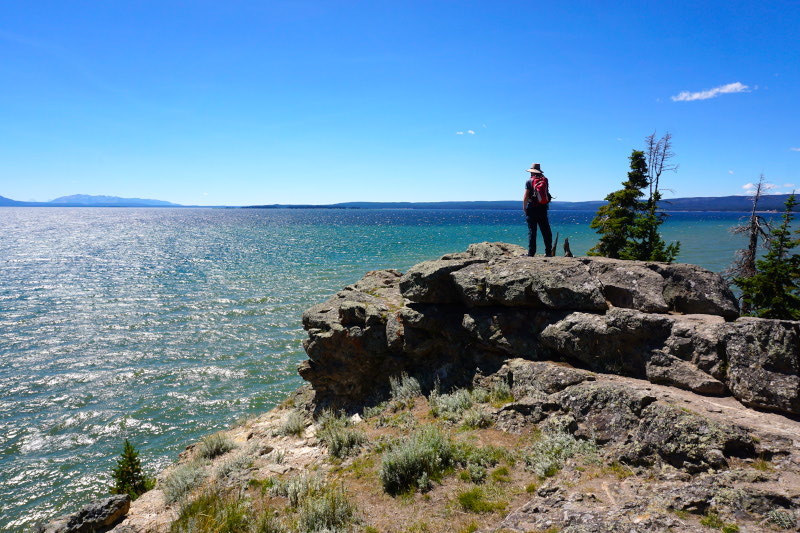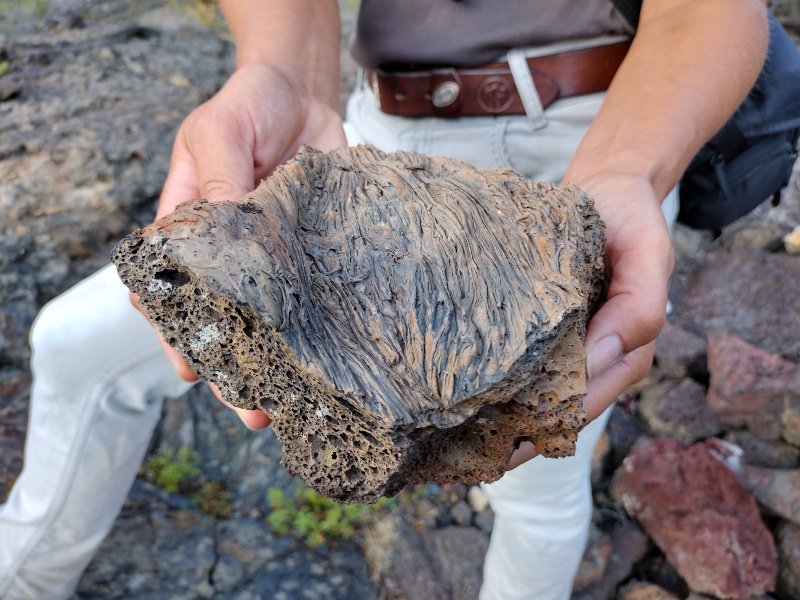31/07 – 19/08/2023
After entering the USA without any problems, we first visited the Little Bighorn Battlefield National Monument. In the course of history, despite agreements between large parts of the indigenous tribes and the government, gold prospectors and settlers in search of farmland repeatedly violated the treaty. Among other things, this resulted in the Great Sioux War from 1876 to 1877. At this location, not far from the town of Hardin,MT, combined forces of Sioux & Cheyenne achieved the only victory over government troops in the course of this war. The world-famous leader Sitting Bull, the warrior Crazy Horse and Lieutenant Colonel George A. Custer were also involved.




Next we went on a hike around Devil’s Tower. The history of the formation of this striking rock began about 50 million years ago. First, a magma chamber formed in the sedimentary rock, but the liquid rock never came to the surface, but cooled underground. Subsequently, the surrounding layers, because they consisted of softer rock, weathered much faster, exposing the cooled magma.






We reached the first of many world-famous sights of the United States the following day, Mount Rushmore in South Dakota. The sculptures of the 4 most important American presidents carved into the mountains of the Black Hills not only have a high symbolic meaning for the US citizens, but are also artistically a masterpiece by the sculptor Gutzon Borglum.

George Washington, Thomas Jefferson, Theodore Roosevelt, Abraham Lincoln

In Casper,WY, the National Historic Trail Interpretive Center was on our list. The interesting and partly interactive exhibition tells how, in the years 1846 – 1869, mainly families made their way to the Pacific coast to build a new life there. Before they could do so, however, they had to spend 4 to 6 months crossing the unexplored expanses of the prairies and the Rocky Mountains with the help of covered wagons and handcarts. The main route at this point was across the Northern Platte River and on to a comparatively easy pass over the Rockies. After the end of the largest wave of migration, for 19 1/2 months the so-called Pony Express used the now well-developed route to transport important mail & messages between San Francisco,CA and St. Joseph,MO by horseback. However, with the completion of the telegraph line between the east and west coasts in October 1861, this business model became obsolete.




On the 2-day crossing to the adjacent Grand Teton and Yellowstone National Parks, we stopped at statues of two important Shoshone.
She was a companion on the Lewis & Clark expedition (the first expedition to the West after the Louisiana Purchase by the US government) and became an important contact person with the Native American tribes of the western regions.
One of the most influential and respected Shoshone chiefs in American history.
We set up our base camp right between the two national parks, due to their proximity to each other, and spent a good week in this area.
Day 1 (Grand Teton) – Hike around Jenny Lake with side trips to Moose Pond, Hidden Falls and Inspiration Point. The most breathtaking situation of the day, however, was our encounter with a black bear. Fortunately, he was peace-loving and ran past us when he recognised us.






Day 2 (Grand Teton) – A relaxing (and uneventful 😉 ) Hike around Phelps Lake.




The following days we explored almost every point of interest in (and along) Yellowstone’s 70 x 45 kilometre caldera, also known as the Yellowstone Supervolcano.
Day 1 (Yellowstone) – From several viewpoints we enjoyed the spectacular view into the Grand Canyon of the Yellowstone and the two waterfalls of the Yellowstone River. We then walked past a variety of hydrothermal features in the Mud Volcano Area. We looked at bubbling mud holes, an extremely acidic hot pool (hot spring) and the underground gurgling spring called Dragon’s Mouth Spring. To finish the day, we then walked along Yellowstone Lake for a bit.



















Day 2 (Yellowstone) – In the Midway Geyser Basin, a hiking trail leads us first to the 91-metre-high Fairy Falls and then past the Spray Geyser to the Imperial Geyser. Not only were we able to admire this geyser at close quarters, but also a bison bull that was warming up right at the edge of the geyser pool. On the way back to the car park we “climbed” the viewing platform over the Grand Prismatic Spring, the largest hot spring in the USA (and third largest in the world). The last item on the agenda was the Fountain Paint Pot Trail in the Lower Geyser Basin. More hot springs (water temperature up to 94°C), bubbling mud holes and geysers awaited us here.








Day 3 (Yellowstone) – Hike to Mystic Falls and then continue in the Upper Geyser Basin past a multitude of hot springs and geysers to Old Faithful, probably the most famous geyser in the National Park. It erupts on average every 90 minutes for 1.5 – 5 minutes and ejects between 14,000 & 32,000 litres of boiling hot water up to 55 m into the air.













Day 4 (Yellowstone) – After a short change of location the day before, we headed for our last major destination in Yellowstone National Park, Mammoth Hot Springs. Here we viewed the world’s largest known travertine terrace (porous limestone). Different strains of bacteria are responsible for the colours, but they depend on the water temperature in the spring. The colour shades are then created when the water “runs down the slope”, like when you run watercolour down a canvas.












Our tour now led to the Craters of the Moon National Monument, a 2000 year young lava field with volcanic cones & craters, mini-volcanoes and lava fields reaching to the horizon.

















So we have already spent three interesting weeks in the USA and there is still so much more to experience here. So stay curious about what we have to report next time.











You certainly have captured so very much, hiked a lot & taken in breathtaking sights!
Thank you for sharing your adventures with us & wish you safe travels!
Loretta & Peter